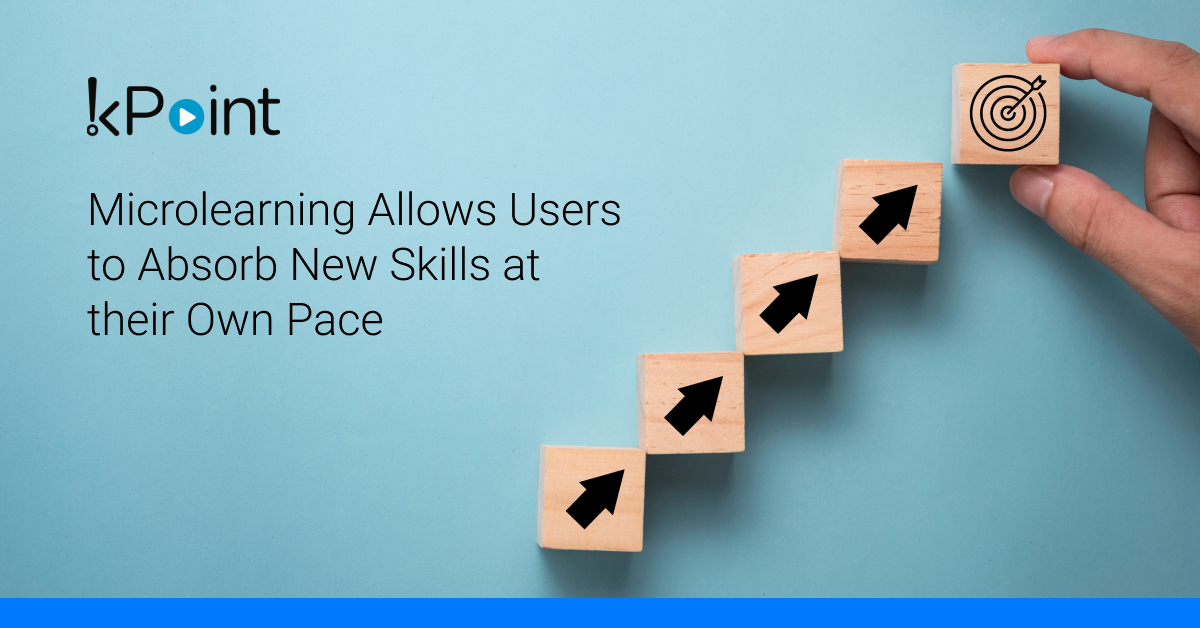
Microlearning is defined as an e-learning methodology that breaks down the learning experience into short, bite-sized sessions of approximately 5 to 10-minute durations. Instead of consuming the entire learning material at one go, employees can complete small sections whenever convenient or necessary to cumulatively reach their learning goals. Microlearning’s online nature and its core architecture rooted in brevity make it a good fit for video, further boosting knowledge retention and your ROI.
Why is Microlearning a Critical Element of L&D?
Microlearning isn’t a new concept. It was first coined in a 1963 book titled The Economics of Human Resources and became part of the modern L&D lexicon with the rise of the internet in the 1990s. Until 2019, it was seen as an ancillary learning model to support the knowledge shared via classroom sessions and massive open online courses (MOOCs).
However, the pandemic changed the role of microlearning in L&D for good. In a remote working environment, employees have less time to devote to learning at a stretch and need bite-sized content that can fit into their schedules. Further, traditional classroom sessions are no longer feasible in a remote or hybrid work environment. Microlearning allows instructors to self-record video and recreate a similar experience digitally. This also has a positive effect on learner engagement and LMS adoption. According to research, over 50% of employees would be more likely to use LMS platforms if the content was broken into shorter lessons.
For these reasons, the global microlearning market is expected to cross $3.83 billion by 2026, up from just about $2 billion in 2021. Companies that can implement a microlearning strategy – aided by video – will be able to upskill their workforce more effectively, optimize their L&D investments, and stay future-ready.
Benefits of Incorporating Video into Your Microlearning Strategy
There are five reasons why video is an essential component of microlearning.
- Video fits perfectly into the average 5-10 minute microlearning session – A typical microlearning session lasts for less than 10 minutes, and it is difficult to pack a text-based learning experience into that timeframe.
- Most workplace skills are best learned by seeing – Microlearning is designed for skills-based knowledge attainment, rather than theoretical or conceptual knowledge. This type of content is best learned by emulating a mentor or watching a video – e.g., when learning how to use a new productivity tool.
- Learners can engage with the content quickly, without a long introduction – Text-based learning materials require context-setting and some sort of introduction to get started. In a video format, you can get right to the point and thereby cover more ground in under 10 minutes.
- Video is device agnostic and can be consumed at the learner’s convenience – Employees will want to consume microlearning content in between work, while commuting, over the weekend, and during other non-9-to-5 hours. Video can adapt to whichever device they are using at that moment and deliver the content without restrictions or compatibility issues.
- Anyone can record a video microlearning session – no technical expertise required – As microlearning content is bite-sized, you will need a much larger volume of content assets. Video creation is highly democratic and requires minimal technical expertise, making it easier to build and maintain your content repository.
Best Practices for Video-based Microlearning
If you want to unlock these benefits, here are four key best practices that can help you maximize the potential of video for microlearning.
- Host microlearning videos on the cloud
Cloud hosting enables infinite scalability so you can create and upload as many content assets as required without a cap. A video-based platform will also support any time, anywhere video consumption, from any device, dramatically improving microlearning adoption. - Empower video creators with an easy-to-use, feature-rich studio
An easy-to-use content studio with handy features like video annotations, easy editing, notes, section highlights, etc. simplifies the video creation process. It would allow both L&D professionals and subject matter experts to create new content at scale to keep learners engaged. - Enable intelligent video search to navigate the microlearning content library
Microlearning content libraries tend to become cluttered and crowded as new content is added every day. An intelligent search capability will help learners find the exact video they need for their job or the skill they want to learn by searching the entire video content and not just the title or description. - Recognize and reinforce learning through video analytics
Microlearning is all about making the learning experience a habit and building a culture of continuous improvement. Video analytics can help you achieve this by highlighting top learners who can be recognized. You can also nudge employees towards upcoming learning goals to reinforce their impact.
Discover kPoint: The Video Management Platform for the Microlearning Era
kPoint is an award-winning video management platform that helps leading companies meet their microlearning goals. Our robust cloud-hosted architecture, intelligent video search, feature-rich studio, and video business intelligence (BI) with LMS integration are well suited to a new era of workforce upskilling where learning isn’t an event but a habit. Microlearning helps to make continuous upskilling and improvement pervasive across the organization and a key trait of your organizational culture. In the short term, you can look forward to a rise in learning content consumption, thanks to video, and better course completion rates. In the long-term, it will translate into a future-ready workforce that is agile and adaptive to the most cutting-edge skills requirements.
To know about these benefits and how you can get there, contact us.

